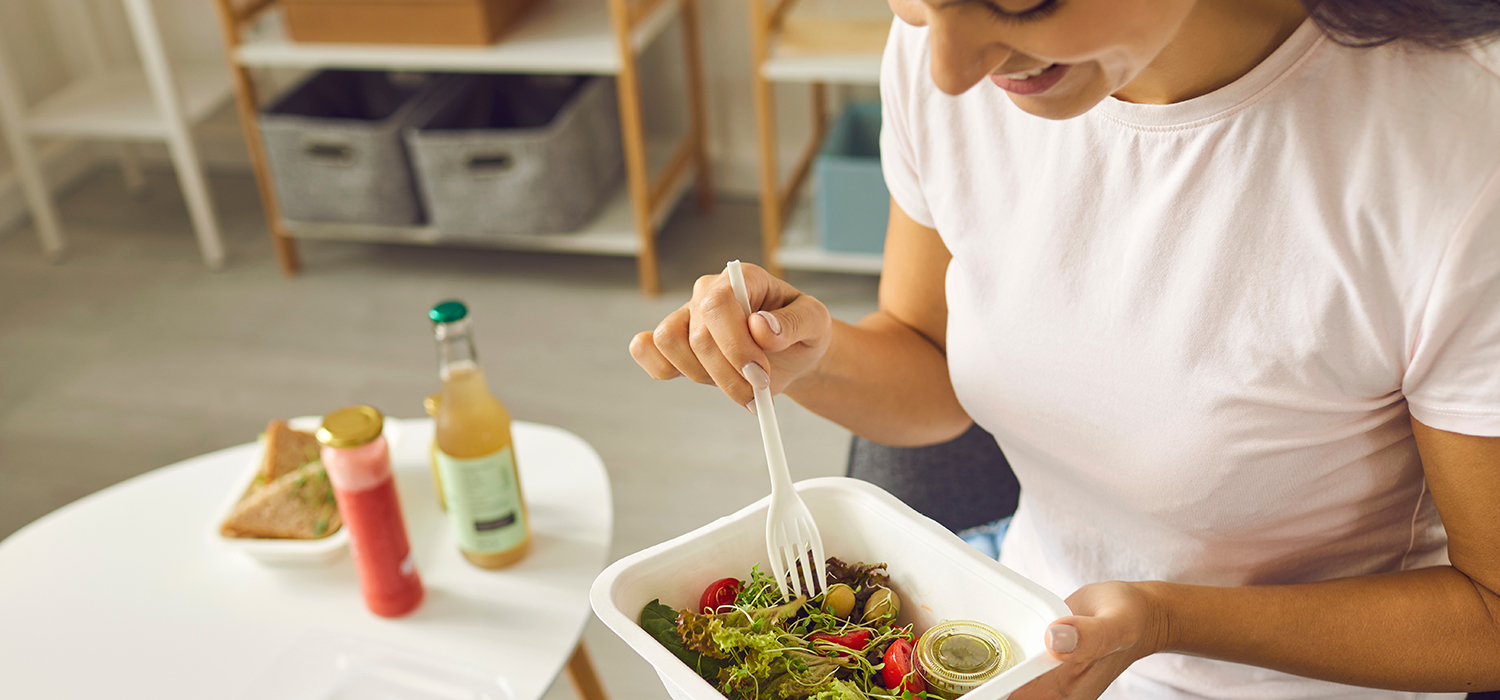Foodservice packaging is safe, sanitary, convenient and economical, that’s why it’s called “the sensible solution.” Foodservice packaging is more than just a convenience. It plays an important and ever increasing role in our daily lives. Americans spend roughly 50 percent of their food budget in restaurants — and they’re using foodservice packaging when they take home leftovers, order takeout or pick up ready-to-eat foods.
Sanitary
Why is foodservice packaging sanitary? Used only once, it:
- Reduces the spread of infectious disease.
- Provides a measure of protection from personal contact.
- Decreases the likelihood of foodborne illnesses.
- Multiple studies conducted at foodservice operations by health departments prove that single-use packaging is more sanitary than reusable options. Reusable foodservice items had “higher microbiological levels then disposable items” and “higher than acceptable bacterial counts.”
- Is supported by the U.S. Food and Drug Administration.
- FDA’s Food Code spells out sanitary and health benefits of single-use foodservice items and mandates their use in certain circumstances. For example, “In situations in which the reuse of multi-use items could result in foodborne illness to consumers, single-service and single-use articles must be used to ensure safety.”
Cost-Effective
How is foodservice packaging cost-effective? It:
- Saves on equipment and supplies.
- Expensive dishwashers and other support equipment, such as racks, carts, shelving, bins, etc., aren’t required. And, there is no need to buy new glasses, ceramics and silverware when existing stock is broken, damaged or stolen.
- Saves on labor.
- Eliminate the need for additional labor to scrape, wash, rinse, dry and store reusable items.
- Saves on storage space.
- Compact, nested and efficient foodservice packaging takes up less space than their reusable counterparts.
Did you know why paper cups were developed?
Paper cups were developed in 1908 to replace the common drinking cup, which was a source of infection and disease.
Did you know there are foodservice packaging awards?
FPI teams up with QSR Magazine bi-annually (in odd years) for the Foodservice Packaging Awards. This competition honors excellence and innovation in single-use foodservice packaging, and winners are recognized at that year’s fall conference.
Considering a switch to reusables in an effort to save money?
Be sure to include new equipment purchases; increased utility costs; reordering broken, damaged, stolen or accidentally discarded items; and higher “back of house” payroll costs as additional labor will be needed.
Safe
Why is foodservice packaging safe? It:
- Reduces workplace hazards.
- Foodservice packaging is lightweight, thus no heavy dishware to move. This helps reduce potential accidents, back injuries and insurance costs in foodservice operations.
- Foodservice packaging means no chipped or broken crockery and glassware that can cause cuts and scratches. There’s no fear of shattering.
- Is regulated by government entities.
- Foodservice packaging materials are evaluated by regulatory agencies such as the U.S. FDA and Health Canada to ensure materials meet stringent safety standards.
Convenient
How is foodservice packaging convenient? It:
- Allows foods and beverages to be consumed anywhere.
- Foodservice packaging lets customers enjoy meals and snacks anywhere in a safe, convenient manner.
- Compact, lightweight packaging is easy to carry.
- Keeps hot foods hot and cold foods cold.
- Single-use packaging can offer excellent insulation to keep foods and beverages at the desired temperature, not only increasing customer satisfaction but also helping to protect it from foodborne disease.
- Promotes a brand.
- Customized packaging becomes a walking
billboard, which can help drive sales.
- Customized packaging becomes a walking
Did you know the benefit of foodservice packaging as it pertains to large crowds?
Outside of restaurants, public foodservice establishments such as hospitals, nursing homes, sports stadiums, mess halls, schools, universities and more have the flexibility to serve hundreds or thousands of people daily due to foodservice packaging.
Did you know many food service products can be recycled?
Many foodservice packaging items can be recycled and / or composted. Visit our Environmental Stewardship page to learn more about what the industry is doing to increase the recovery of these valuable materials.
Resource-Efficient
How does foodservice packaging help with resource efficiency? It:
- Reduces water and energy.
- Using foodservice packaging reduces operators’ consumption of water and energy resources needed to wash reusables.
- Lessens the use of virgin raw materials.
- When recycled, the materials found in foodservice packaging can be turned into new products made with recycled content.
Promotional
How can foodservice packaging be promotional and used as a communications tool? It:
- Conveys important messaging.
- Foodservice packaging can get key messages, such as reheating instructions or nutritional information, literally into the consumer’s hands.
- Packaging can communicate post-use messages, such as “Don’t litter” or “Please recycle or compost.”

